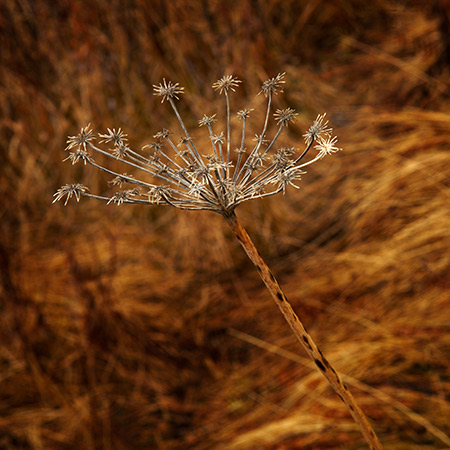I know, it’s just the dried up remnants of a weed. I wish I knew the name of the plant so I could at least title it correctly, but I guess I didn’t study enough botany in school. Even though it is just a weed, look at the visual qualities of the image. The line and texture make it interesting to look at. The top of the plant is bursting out from the stem, almost like fireworks exploding from a mortar. By keeping the one plant sharp and blurring the background, even though both are the same color, the plant stands out, it separates from the background.
Controlling depth of field, so vital in creating photographs. I know, it is the technical stuff that many of us don’t want to get in to, but it is necessary if we are going to be in control of our art. With this image, I used a 70mm lens and moved in as close as it would focus. Due to being so close to the subject, my depth of field was very narrow, so much so that the near and far parts of the weed were out of focus, even at a moderately wide aperture. I actually needed to stop down to f16 to maintain crisp focus on the weed, but due to how close I was to it, the background fell off to a nice blur.
There are three things that factor in to effective depth of field. 1. Aperture 2. Focal length of the lens 3. Lens to subject distance. All three of these play a part in determining what will be in focus and what will not. We, as photographers must know our equipment and how to use it. In the example above, had I just thought that due to needing shallow depth of field I should set the aperture to f2.8, I would have been terribly disappointed. I am glad that I have learned the technical aspects of photography to the point of really not having to think about it so that I can focus on composing and creating art!



Recent Comments